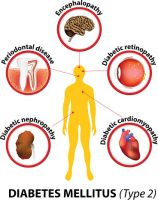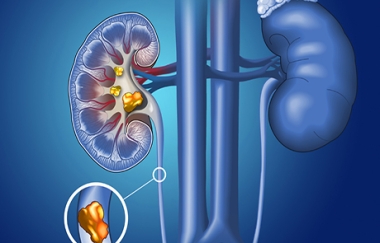במחקר שהתפרסם ביוני 2020 בכתב העת Circulation נבחנה היעילות והבטיחות של הוספת Rivaroxaban (קסרלטו) 2.5 מ”ג פעמיים ביום לאספירין 100 מ”ג בחולי סוכרת עם מחלה ווסקולרית, הנמצאים כידוע בסיכון מוגבר לאירועים קרדיווסקולרים מג’וריים. החוקרים ביקשו לבחון באיזו מידה הוספת קסרלטו מובילה למניעת אירועים אלו, בהשוואה לטיפול באספירין בלבד.מבין 27,395 מטופלים עם מחלת לב כלילית ו/או מחלת עורקים פריפרית שהשתתפו במחקר ה-COMPASS,10,341 סבלו גם מסוכרת.
החוקרים מציינים כי סוכרת מגבירה את הסיכון של חולים עם טרשת עורקים, ומדגישים כי חולי סוכרת עם מחלת לב כלילית ומחלת עורקים פריפרית מהווים קבוצה בסיכון גבוה מאוד לאירועים איסכמיים כליליים ומוחיים ולאירועי גפה מג’ורים, וזאת למרות התפתחויות בטיפול בהיפרליפידמיה, יתר לחץ דם וסוכרת.
בקבוצת הביקורת, במהלך 3 שנים, הסיכון המשולב לתמותה, שבץ או MI היה גבוה ב 48% בקרב מטופלים עם מחלה ווסקולרית וסוכרת לעומת חולים עם מחלה וסקולרית ללא סוכרת. שיעור הסיכון המשולב בקבוצה זו היה 10.7%.
הוספת קסרלטו 2.5 מ”ג פעמיים ביום לאספירין 100 מ”ג הובילה להפחתה מובהקת סטטיסטית של 26% בסיכון למוות קרדיווסקולרי, שבץ ו-MI בקרב מטופלים עם סוכרת ומחלת לב כלילית ו/או מחלת עורקים פריפרית. כמו כן, בקבוצת החולים הזו, (עם סוכרת ומחלה וסקולרית), נצפתה גם הפחתה של 37% בסיכון לשבץ.
בקבוצת החולים עם סוכרת ומחלה וסקולרית, הטיפול בקסרלטו הוביל אמנם לעליה בסיכון לדימום מג’ורי (4.5% לעומת 3.4%), אך ללא עליה בסיכון לדימום תוך מוחי או דימום מסכן חיים.
החוקרים מדגישים כי כתוצאה מכך התועלת נטו (NET BENEFIT), כלומר הירידה בסיכון לארועים בניכוי העליה בסיכון לדימומים, הייתה גבוה יותר באופן מובהק בחולי הסוכרת שטופלו בקסרלטו: 2.7% לעומת 1% בחולים ללא סכרת.
מסקנת החוקרים היא כי עבור מטופלים עם מחלה אתרוסקלרוטית כרונית, הוספת קסרלטו 2.5 מ”ג פעמיים ביום לאספירין מובילה ליתרון מבחינת תוצאים קורונרים, סרברווסקולריים ופריפריים בחולים עם וללא סוכרת. בהינתן הסיכון המוגבר של חולי סוכרת, היתרון האבסולוטי של הוספת קסרלטו הוא גדול יותר בחולי סוכרת, כולל הפחתה גדולה של פי 3 בסיכון למוות מכל סיבה.
Bhatt et al; Circulation. 2020;141:1841-1854.
PP-XAR-IL-0454-1
Xarelto essential information
Xarelto 2.5mg
Indication: Xarelto, co-administered with acetylsalicylic acid (ASA) alone or with ASA plus clopidogrel, is indicated for the prevention of atherothrombotic events in adult patients after an acute coronary syndrome (ACS) with elevated cardiac biomarkers.
Xarelto, co-administered with acetylsalicylic acid (ASA), is indicated for the prevention of atherothrombotic events in adult patients with coronary artery disease (CAD) or symptomatic peripheral artery disease (PAD) at high risk of ischaemic events .
WARNING:
A. PREMATURE DISCONTINUATION OF XARELTO INCREASES THE RISK OF THROMBOTIC EVENTS
Premature discontinuation of any oral anticoagulant, including XARELTO, increases the risk of thrombotic events. If anticoagulation with XARELTO is discontinued for a reason other than pathological bleeding or completion of a course of therapy, consider coverage with another anticoagulant
B. SPINAL/EPIDURAL HEMATOMA
Epidural or spinal hematomas have occurred in patients treated with XARELTO who are receiving neuraxial anesthesia or undergoing spinal puncture. These hematomas may result in long-term or permanent paralysis. Consider these risks when scheduling patients for spinal procedures. Factors that can increase the risk of developing epidural or spinal hematomas in these patients include:
• use of indwelling epidural catheters
• concomitant use of other drugs that affect hemostasis, such as non-steroidal anti inflammatory drugs (NSAIDs), platelet inhibitors, other anticoagulants
• a history of traumatic or repeated epidural or spinal punctures
• a history of spinal deformity or spinal surgery
• optimal timing between the administration of XARELTO and neuraxial procedures is not known
Monitor patients frequently for signs and symptoms of neurological impairment. If neurological compromise is noted, urgent treatment is necessary
Consider the benefits and risks before neuraxial intervention in patients anticoagulated or to be anticoagulated for thromboprophylaxis [see special Warnings and Precautions for use
Contraindications: Hypersensitivity to the active substance or any of the excipients; active clinically significant bleeding; lesion or condition considered a significant risk for major bleeding; concomitant treatment with any other anticoagulants except under specific circumstances of switching anticoagulant therapy or when unfractionated heparin is given at doses necessary to maintain an open central venous or arterial catheter; concomitant treatment of ACS with antiplatelet therapy in patients with a prior stroke or a transient ischaemic attack (TIA); concomitant treatment of CAD/PAD with ASA in patients with previous haemorrhagic or lacunar stroke, or any stroke within a month; hepatic disease associated with coagulopathy and clinically relevant bleeding risk including cirrhotic patients with Child Pugh B and C; pregnancy and breast feeding.
Warnings and Precautions: for full list of warning and precautions as well as adverse events, see MOH approved prescribing information.
|



















השאירו תגובה
רוצה להצטרף לדיון?תרגישו חופשי לתרום!